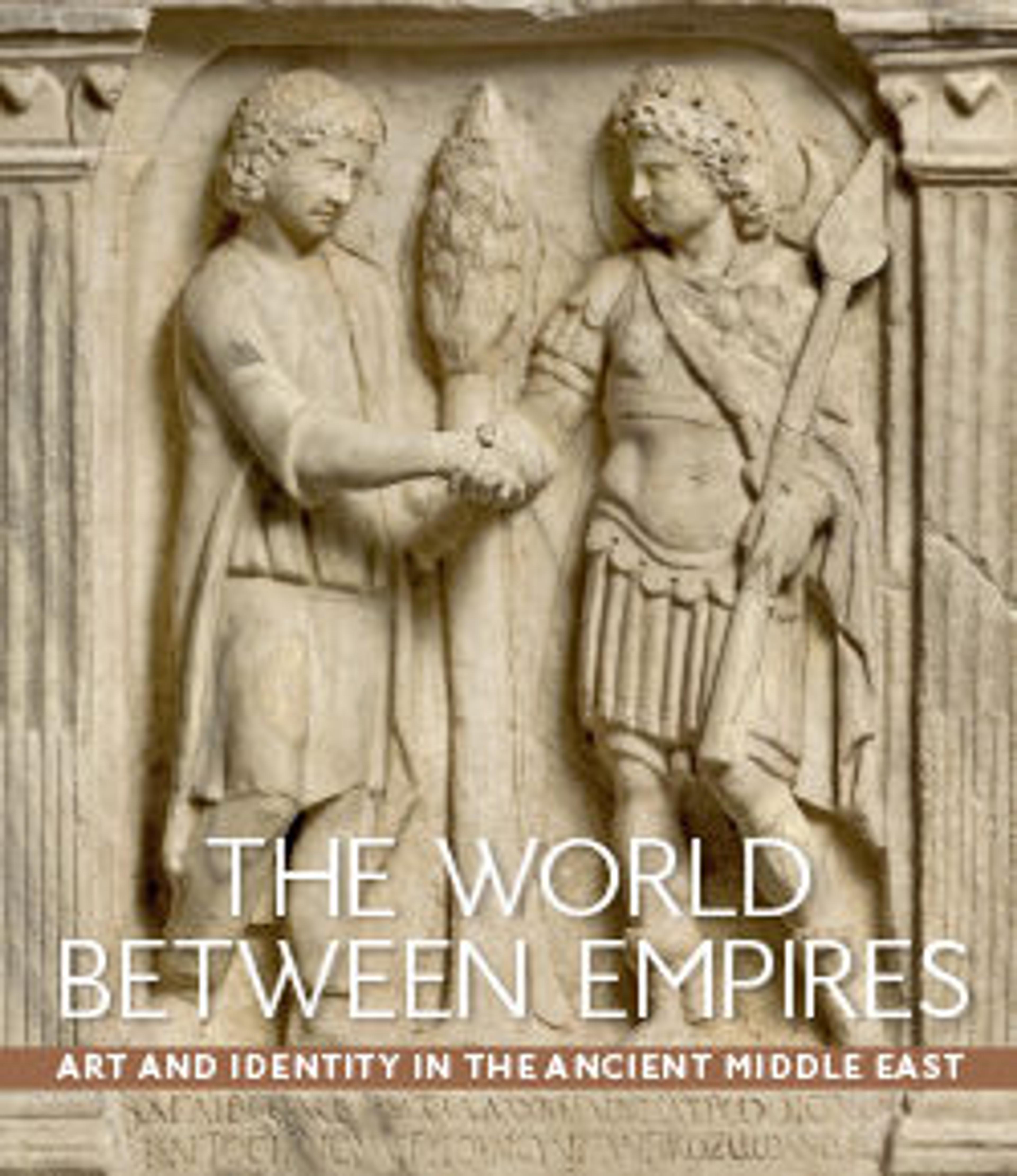Standing man
This fragmentary stone relief of a standing man is a product of the resurgence of an Eastern aesthetic in Parthian art. The style it exemplifies is characterized by strict frontality and a concentration on linear details, in particular the careful rendition of textiles. The figure shown here, carved in extremely low relief, may be identified as a worshipper by the right hand raised palm forward in a gesture of reverence. Lines incised on the surface, rather than volumetric modeling, convey the quality of his clothes, mustache, and broad, square-cut beard. His prominent eyes are flat and outlined with ridges; the nose is also flat. His hair is executed in tiers of thick spirals. The worshiper wears a belted tunic decorated with a row of lozenges, each containing a circle; a braid of spirals runs down the front of his garment and others trim the cuffs. Two items are tucked under his belt, and in his left hand he holds an object. At his right hip another object is depicted, perhaps meant as a sword. Votive images of worshipers similar to this one adorned the terraces of sanctuary complexes such as those at Bard-e Neshandeh and Masjid-i Sulaiman, both in the Iranian province of Khuzestan.
Artwork Details
- Title: Standing man
- Period: Parthian
- Date: ca. 2nd century CE
- Geography: Southwestern Iran
- Culture: Parthian
- Medium: Calcareous sandstone
- Dimensions: H. 30 1/4 × W. 15 3/4 × D. 4 1/2 in. (76.8 × 40 × 11.4 cm)
- Credit Line: Rogers Fund, 1951
- Object Number: 51.72.1
- Curatorial Department: Ancient West Asian Art
More Artwork
Research Resources
The Met provides unparalleled resources for research and welcomes an international community of students and scholars. The Met's Open Access API is where creators and researchers can connect to the The Met collection. Open Access data and public domain images are available for unrestricted commercial and noncommercial use without permission or fee.
To request images under copyright and other restrictions, please use this Image Request form.
Feedback
We continue to research and examine historical and cultural context for objects in The Met collection. If you have comments or questions about this object record, please contact us using the form below. The Museum looks forward to receiving your comments.
